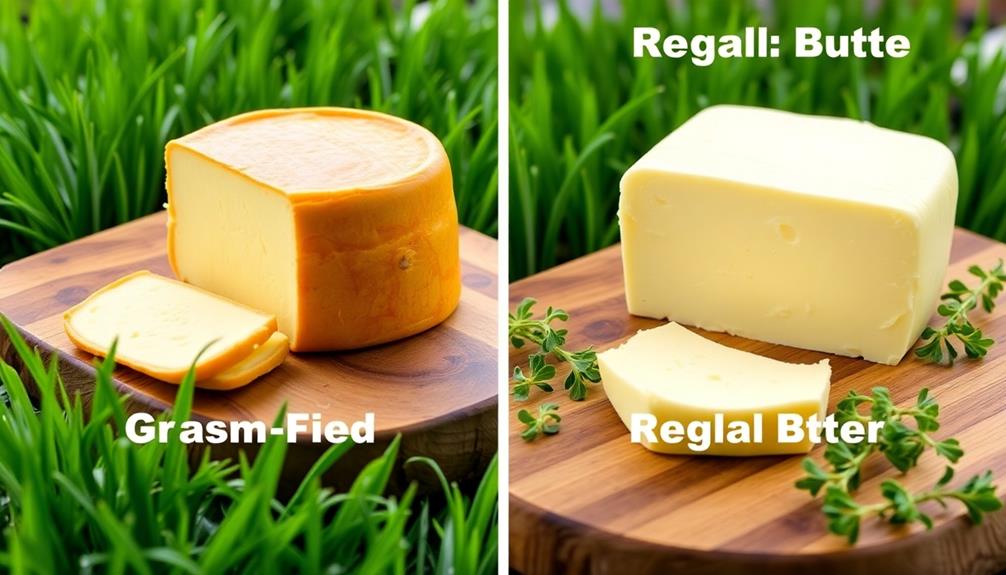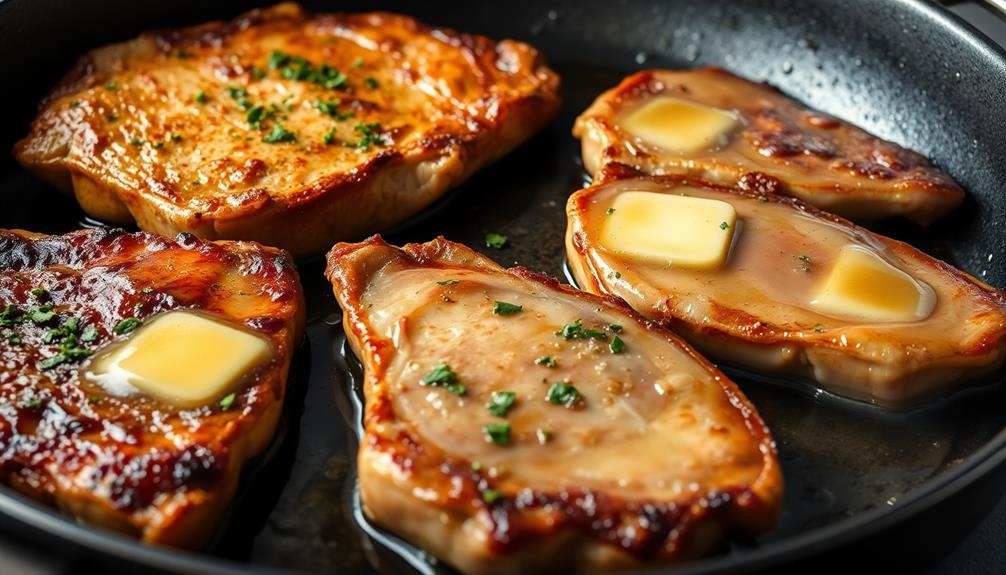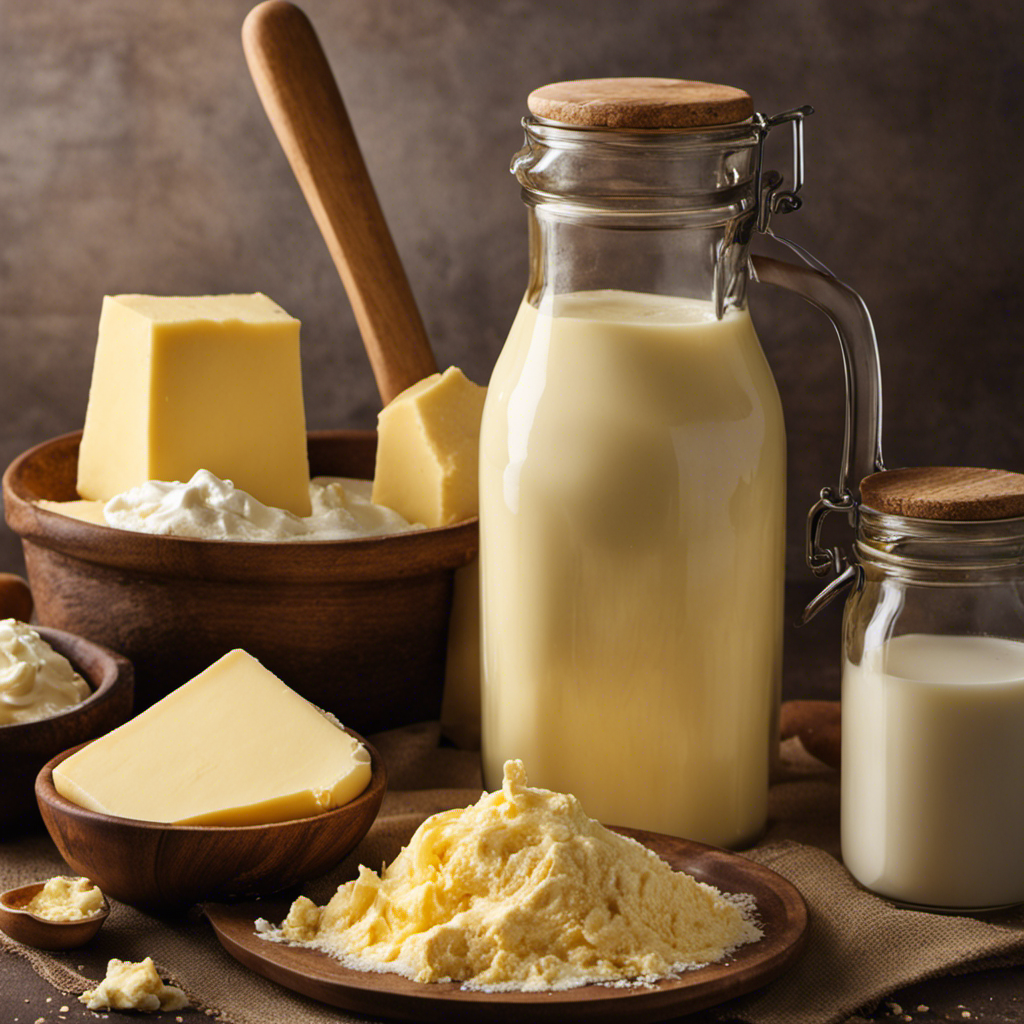Were you aware that using the microwave to melt butter is a frequent cooking chore that can be accomplished rapidly and effectively? Indeed, a stick of butter can be melted in the microwave in just about 30 seconds!
Understanding the right techniques and precautions for microwaving butter is crucial to achieve the perfect consistency without any unwanted messes.
In this article, I will share the best practices, power levels, and troubleshooting tips to ensure your butter melting process is smooth and successful.
Key Takeaways
- Melting butter in the microwave takes about 30 seconds for a stick of butter.
- Use microwave-safe containers and cut butter into small, uniform pieces for even melting.
- Heat butter in short intervals, stirring in between, and start with room temperature butter for even melting.
- Using a microwave-safe dish with a lid or cover can trap heat and speed up the melting process.
Understanding the Microwaving Process
Microwaving is a quick and efficient way to melt butter. It’s important to follow a few guidelines for microwave safety.
First, always use microwave-safe containers to avoid any potential hazards. Be cautious not to overheat the butter, as it can easily burn.
To properly melt butter in the microwave, start by cutting it into small, uniform pieces. This ensures even melting and prevents any hot spots. Place the butter in a microwave-safe dish and cover it with a microwave-safe lid or microwave-safe plastic wrap.
Set the microwave to a low power level and heat the butter in short intervals, stirring in between each interval. This gradual approach prevents the butter from overheating and allows for a smooth, melted consistency.
While microwaving is a popular method, there are also alternative ways to melt butter, such as using a double boiler or melting it on the stovetop.
Importance of Proper Butter Melting
To ensure your butter is properly melted, it’s important to pay attention to the timing and method you use. The temperature of the butter plays a crucial role in achieving even melting and a successful outcome. Here are some tips for achieving the perfect butter melting:
- Start with room temperature butter. Cold butter takes longer to melt and can result in uneven melting.
- Cut the butter into smaller pieces or cubes. This helps the heat distribute more evenly, allowing for faster and more consistent melting.
- Use a microwave-safe dish with a lid or cover. This helps to trap the heat and create a steamy environment, aiding in the melting process.
- Microwave at a low power setting, such as 50%, to prevent the butter from overheating and separating.
- Stir the butter occasionally during the melting process to promote even heat distribution and prevent hot spots.
Best Practices for Melting Butter in the Microwave
When it comes to melting butter in the microwave, two key factors need to be considered: the power level and whether or not stirring is necessary.
The power level determines how quickly the butter will melt and can have a significant impact on the final result.
Stirring, on the other hand, helps to distribute the heat evenly and ensures that the butter melts consistently.
Microwave Power Level
If you want your butter to melt faster, you can increase the power level on your microwave. Adjusting the microwave power control allows for more efficient heating and quicker melting of butter. The power level determines the intensity of the microwaves, which directly affects the heating process.
Here are a few factors to consider when using microwave power control to achieve the desired melting consistency for your butter:
-
Power Level: Increasing the power level to its maximum setting will generate higher energy waves, resulting in faster melting.
-
Butter Quantity: The amount of butter being melted can influence the required power level. Larger quantities may require a higher power setting for faster melting.
-
Container Material: Different materials conduct heat differently. A microwave-safe glass container will heat faster than a plastic one, affecting the melting time.
-
Stirring: Regularly stirring the butter during the melting process helps distribute the heat evenly and promotes faster melting.
-
Microwave Wattage: The wattage of your microwave also affects the melting time. Higher wattage microwaves generally melt butter faster.
Stirring During Melting?
Regularly stirring during the melting process helps evenly distribute the heat and promotes a faster melting time. By stirring the butter, you ensure that the heat is evenly distributed throughout the container, preventing any hot spots that could lead to uneven melting. Additionally, stirring helps to break up any clumps or chunks of butter, allowing them to melt more quickly. The frequency of stirring depends on the size of the melting container and the amount of butter being melted. For smaller containers, stirring every 15-30 seconds should be sufficient, while larger containers may require stirring every 30-60 seconds. The key is to consistently monitor and stir the butter to ensure a smooth and efficient melting process.
| Container Size | Stirring Frequency |
|---|---|
| Small | Every 15-30 seconds |
| Medium | Every 30-45 seconds |
| Large | Every 45-60 seconds |
Considering the importance of stirring, it is crucial to understand the factors that can affect butter melting time.
Factors Affecting Butter Melting Time
When it comes to melting butter in the microwave, there are several factors that can affect the melting time.
The first factor is the microwave power level. Higher power levels will melt the butter faster, while lower power levels will take longer.
Another factor to consider is the temperature of the butter before microwaving. Cold butter will take longer to melt compared to butter that is at room temperature.
Lastly, the quantity of butter being melted also plays a role. Larger quantities will take longer to melt compared to smaller amounts.
Microwave Power Level
To melt butter in the microwave, you can adjust the power level to make the process faster or slower. The power level of a microwave determines how quickly it heats food, and this can have an impact on the efficiency of melting butter.
Here are some key points to consider:
-
Microwave power efficiency: Higher power levels will melt butter faster, but they may also cause uneven melting or splattering. It’s important to find the right balance between speed and quality.
-
Container size: The size and material of the container can affect how quickly the butter melts. Smaller containers will heat up faster, while larger containers may require more time.
-
Stirring: Stirring the butter during the melting process can help distribute the heat more evenly and prevent any hot spots.
-
Covering: Using a microwave-safe lid or plastic wrap can help trap the heat and speed up the melting process.
-
Resting time: After melting, it’s important to let the butter rest for a few minutes to ensure it is fully melted and ready to use.
Butter Temperature
If you want your butter to be soft and spreadable, make sure you take it out of the fridge ahead of time. This is because the temperature of the butter greatly affects the time it takes to melt.
When butter is cold, it has a higher melting point and will take longer to melt. On the other hand, if the butter is already at room temperature, it will melt much faster.
The process of melting butter can also be influenced by various techniques. For example, cutting the butter into smaller pieces or using a microwave-safe dish can speed up the melting time. Additionally, the wattage of the microwave can also affect the melting time. Higher wattage microwaves will melt butter faster than lower wattage ones.
Butter Quantity
The amount of butter you use can greatly impact the final outcome of your recipe. Not only does it affect the taste and texture, but it also plays a crucial role in the melting process.
When melting butter, it is important to consider the quantity you need. Here are five key points to keep in mind:
- Start with the desired quantity of butter for your recipe.
- Cut the butter into small, uniform pieces to ensure even melting.
- Place the butter in a microwave-safe bowl or container.
- Microwave the butter on a low power setting, such as 50%, to prevent splattering and overheating.
- Check the butter every 10-15 seconds and stir to promote even melting.
Following these steps will help you melt your butter safely and efficiently. Remember, the melting time may vary depending on the quantity and the power of your microwave.
Recommended Power Levels for Melting Butter
Using a lower power level when melting butter in the microwave can help prevent it from overheating. The wattage of your microwave plays an important role in achieving the desired butter melting consistency. Higher wattage microwaves tend to heat things more quickly, which can lead to uneven melting or even burning of the butter. To ensure a smooth and creamy melted butter, it is recommended to use a lower power level setting. This allows for a slower and more controlled melting process, giving you better control over the final consistency. Below is a table showcasing the recommended power levels for melting butter based on different microwave wattages:
| Microwave Wattage | Recommended Power Level |
|---|---|
| 700-800 Watts | 50% Power |
| 900-1000 Watts | 40% Power |
| 1100-1200 Watts | 30% Power |
How to Determine the Ideal Microwave Cooking Time
When it comes to determining the ideal microwave cooking time, there are several factors that can affect the outcome. These factors include the type and size of the food being cooked, the starting temperature of the food, and the wattage of the microwave.
One method to find the perfect cooking time is through trial and error, where you adjust the cooking time based on the results until you achieve the desired doneness.
Additionally, understanding and utilizing the different power settings on your microwave can greatly influence the cooking time and ensure accurate results.
Factors Affecting Cooking Time
Factors like the wattage of the microwave and the consistency of the butter can affect how long it takes to melt. When it comes to microwave safety, it’s important to consider these factors to avoid accidents.
Here are some key points to keep in mind:
- Wattage: Microwaves with higher wattage will melt butter faster than those with lower wattage.
- Butter consistency: Softened butter will melt quicker than cold, hard butter.
- Container material: Microwaving butter in a glass or ceramic container will distribute heat more evenly than using plastic.
- Butter quality: Lower quality butter may contain more water, which can affect melting time.
- Microwave settings: Using the defrost or low power setting will result in slower, more controlled melting.
Trial and Error Method
If you’re unsure of the optimal cooking time, you can try different durations and adjust accordingly. One important factor to consider is the microwave wattage. Higher wattage microwaves will generally melt butter faster than lower wattage ones. To demonstrate the variations in melting time based on wattage, I have created a table:
| Microwave Wattage | Average Melting Time |
|---|---|
| 700W | 30 seconds |
| 900W | 20 seconds |
| 1100W | 15 seconds |
| 1200W | 10 seconds |
As you can see, higher wattage microwaves significantly reduce the melting time. This is important to keep in mind when determining the optimal cooking time for your butter. Understanding these variations can help you achieve the desired consistency for your melted butter. Now, let’s delve into the next section about microwave power settings to further refine our cooking process.
Microwave Power Settings
After experimenting with the trial and error method, I realized that there is another factor that affects how long it takes to melt butter in the microwave: the power settings. The microwave wattage plays a crucial role in melting butter evenly and efficiently.
Here are some key points to consider:
-
Microwave wattage: Different microwaves have different wattage levels, ranging from 600 to 1200 watts. Higher wattage microwaves tend to melt butter faster.
-
Power levels: Most microwaves offer multiple power levels, such as low, medium, and high. Choosing the right power level will help you control the melting process and prevent overheating.
-
Time adjustments: Based on the wattage and power level, you may need to adjust the melting time. Higher wattage microwaves will require less time, while lower wattage microwaves will need more time.
-
Stirring: To ensure even melting, it’s important to stir the butter at regular intervals during the microwave process.
-
Resting time: After melting, let the butter rest for a minute or two before using it. This will help distribute the heat evenly and prevent any hot spots.
Tips for Achieving Evenly Melted Butter
For even melted butter, make sure you stir it occasionally while microwaving. This simple step ensures that the butter heats evenly and maintains a consistent consistency throughout.
When microwaving butter, it’s important to prioritize microwave safety by using a microwave-safe container and covering it with a microwave-safe lid or microwave-safe plastic wrap. This helps prevent any splattering or exploding of the butter while it heats up.
To achieve the perfect butter consistency, start by cutting the butter into smaller chunks. This allows for more even heat distribution and quicker melting. Place the butter in the microwave and heat it in short bursts, stirring in between each interval. This helps prevent any hot spots and ensures that the butter melts uniformly.
Safety Precautions When Melting Butter in the Microwave
When it comes to melting butter in the microwave, it’s important to prioritize safety. Microwaves can be a convenient tool for quickly melting butter, but precautions should be taken to avoid accidents or injuries. Here are some safety tips to keep in mind:
- Always use a microwave-safe container to melt butter.
- Cut the butter into smaller, uniform pieces for even melting.
- Use short bursts of microwave time, checking and stirring the butter in between each interval.
- Be cautious of overheating the butter, as it can lead to splattering or burning.
- Use oven mitts or a towel to handle the hot container after microwaving.
Common Mistakes to Avoid When Microwaving Butter
To avoid common mistakes when microwaving butter, you should remember to always use a microwave-safe container. One common mistake is using a regular plastic container, which can melt or release harmful chemicals into the butter.
Another mistake is microwaving butter on high power for too long. This can cause the butter to overheat and become burnt or separated. Instead, microwaving butter in short intervals on low power is recommended.
Additionally, not covering the butter while microwaving can lead to splattering and uneven heating. Using a microwave-safe cover or microwave-safe plastic wrap can prevent this.
Lastly, it is important to stir the butter well after each interval to ensure even melting. By following these troubleshooting tips, you can successfully melt butter in the microwave without any common mistakes.
Alternative Methods for Melting Butter
If you’re looking for alternative methods, try using a double boiler to melt butter. This technique is perfect for those who want a quick and efficient way to melt butter without using a microwave.
Here are five alternative methods for melting butter:
-
Double boiler: Place a heatproof bowl on top of a pot of simmering water. Add the butter to the bowl and let it melt slowly and evenly.
-
Stovetop method: Cut the butter into small pieces and place them in a saucepan. Heat the pan over low heat and stir constantly until the butter melts.
-
Oven method: Preheat the oven to a low temperature (around 200°F). Place the butter in a heatproof dish and let it melt slowly in the oven.
-
Sous vide: Vacuum-seal the butter in a bag and place it in a water bath set to the desired temperature. The butter will melt evenly without any risk of burning.
-
Slow cooker: Place the butter in a slow cooker on the lowest heat setting and let it melt slowly over a few hours.
Troubleshooting Butter Melting Issues
Having trouble with your butter melting? Don’t worry, there are a few things you can check to troubleshoot the issue.
First, let’s talk about the butter melting temperature. Butter starts to melt around 82°F (28°C). If your butter is not melting properly, it could be because the temperature is too low. Ensure that you are using a saucepan with low heat to slowly melt the butter. If the heat is too high, the butter may burn instead of melting.
Additionally, make sure that the butter is cut into small pieces to aid in the melting process.
Frequently Asked Questions
Can I Melt Butter in the Microwave Without Covering It?
I melt butter quickly in the microwave without covering it. This technique is effective and convenient. It’s a simple process that saves time and ensures smooth, evenly melted butter for all your culinary needs.
Is It Safe to Melt Butter in a Plastic Container in the Microwave?
Melting butter in the microwave can be convenient, but is it safe for glass containers? Well, I’m here to tell you that it’s perfectly safe! Just make sure to use microwave-safe glass and avoid any health risks.
Can I Use the Microwave’s Defrost Setting to Melt Butter?
I don’t recommend using the microwave’s defrost setting to melt butter. It may not heat evenly, resulting in a partially melted and partially solid butter. There are alternative melting methods that are more precise and effective.
How Long Does It Take to Melt Butter in the Microwave on Low Power?
To melt butter in the microwave, it’s important to take precautions and use the best settings. Setting the microwave to low power ensures a gradual and even melt. The exact time will vary depending on the quantity of butter.
Can I Melt Frozen Butter in the Microwave?
Sure, I can melt frozen butter in the microwave. It’s important to use low power and short bursts to prevent overheating. I’ll share the best practices for melting butter in the microwave.
Conclusion
In conclusion, melting butter in the microwave is a quick and convenient method that requires proper technique for optimal results. By following the recommended power levels and practicing safety precautions, you can easily achieve smooth and melted butter every time.
However, it is important to avoid common mistakes and be aware of alternative methods if issues arise. Just like a skilled chemist delicately combining elements in the lab, melting butter in the microwave requires precision and attention to detail.










